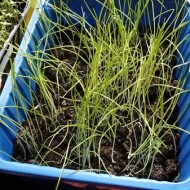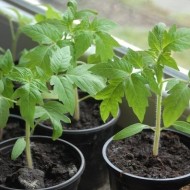Lunar calendar: work plan for the gardener for February 2021
Content
Gardening work in February
The lunar calendar assumes the following works in February:
- care for root crops and bulbs;
- pruning and drying seedlings when decaying;
- sowing of perennial plants;
- sheltering flowers in the open field;
- rodent bait layout;
- preparation of fruit cuttings;
- application of pest control;
- forcing bulbous crops;
- insulation of trees;
- removal of snow cover from trees and greenhouses;
- grafting of fruit trees;
- growing greenery in a greenhouse or on a windowsill;
- planting large trees;
- propagation of conifers using cuttings;
- grafting roses;
- purchase of seeds and planning of planting.
Video "Work in the garden and in the garden in February"
From this video you will learn what work needs to be done in the garden and in the garden in February.
Planting seeds
Not every plant is planted at the beginning of the year. Gardeners know that the first step is to plant vegetables with a long growing season, as well as perennial plants in which root crops develop for several months. As for annual flowers, plants with a long growing season are sown at the end of winter, as well as seeds with long germination.
Before planting, you need to prepare the ground. It is stored indoors for a couple of days to warm up to the desired temperature. The seeds are treated with an anti-fungus agent.
At the end of winter, seedlings of late tomatoes are made, the growing season of which is about 130 days. Early varieties are sown in February to be grown in greenhouses later. The pepper ripens for about 120 days. Two months after sowing, the first shoots appear. Peppers have a long growing season, so they should ripen before the cold weather sets in.
Eggplants must be sown two months before planting in the ground, since their growing period takes about 130 days. Shoots hatch out of the ground after two weeks if planted in moist soil.
Leeks are also planted in the last month of winter. It is necessary to create optimal heat conditions, as the bow will shoot flower arrows if it is too hot in the room. In two months, the seedlings will be ready for planting. At the end of winter, celery, strawberries and elite potatoes are planted.
As for plants, pansies are planted on seedlings in February, which bloom in early summer. The ideal temperature range for these colors is about +15 ° C. This month, petunia is also planted, which after a month is distributed in separate pots, as well as lobelia and begonia.
The most auspicious days
The 6th, 9th, 11th and 20th are considered ideal days for a gardener in the last month of winter. It is better to buy seeds for planting on the 5th, 7th or 19th. Pruning is carried out in the period from 21 to 25, and inoculation - 8-10 or 17-18. Large trees are planted on the 8th or 13th, and they work with the soil on the 1st or 28th. The sowing period is February 13, 16 or 28. Watering can be done on any day except 13, 17 and 22.
Seedlings begin to form on the 13th, 16th or 28th, and flowers are transplanted on the 1st, 8th or 14th. Top dressing is carried out on the 1st, 6th, 7th, 20th, 23rd and 28th, and pests are eliminated on the 1st, 11th, 17th or 20. It is better to distill bulb flowers after February 10th.
In order for all the efforts in the gardener's work not to be in vain, it is important to know the unfavorable days for gardening.
It is strictly forbidden to carry out any gardening events on February 3, 5, 25 and 27.




